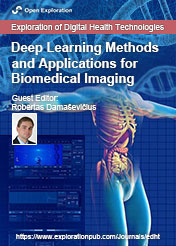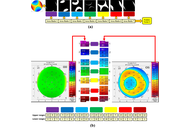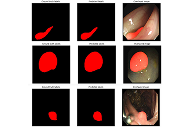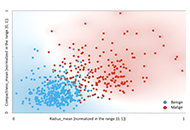
Deep Learning Methods and Applications for Biomedical Imaging
Guest Editor
Robertas Damaševičius E-Mail
Faculty of Applied Mathematics, Silesian University of Technology, Gliwice, Poland
Research Keywords: Artificial intelligence, deep learning, digital health, medical imaging
About the Special lssue
The rapid evolution of deep learning techniques over the past decade has ushered in a transformative era for various domains, with biomedical imaging standing out as one of the most impacted fields. Biomedical imaging, which encompasses a range of modalities from X-rays to magnetic resonance imaging (MRI) to optical microscopy, has always been at the forefront of healthcare, aiding clinicians in diagnosis, treatment planning, and monitoring of diseases. The convergence of deep learning with biomedical imaging promises not only enhanced image quality and interpretation but also the potential to uncover hidden patterns and features that might be imperceptible to the human eye.
This issue aims to highlight the latest advancements, challenges, and opportunities in the integration of deep learning techniques with biomedical imaging, offering readers a comprehensive overview of the state-of-the-art developments in this exciting domain.
The topics of interest for this special issue include, but are not limited to:
Novel Deep Learning Architectures: Development and evaluation of new neural network architectures tailored for specific biomedical imaging modalities or challenges.
Transfer Learning and Pre-trained Models: Exploration of strategies to leverage pre-existing models for new imaging tasks, reducing the need for extensive labeled datasets.
Data Augmentation Techniques: Methods to synthetically expand the available dataset for training deep learning models, enhancing their generalization capabilities.
Interpretable Deep Learning: Approaches to make deep learning decisions more understandable and transparent for clinicians, bridging the gap between AI predictions and clinical decision-making.
Automated Disease Detection and Classification: Utilizing deep learning for the automatic identification and categorization of diseases from biomedical images.
Image Enhancement and Reconstruction: Techniques that employ deep learning to improve image quality, reduce noise, or even reconstruct missing or corrupted parts of an image.
Integration with Clinical Workflow: Studies that focus on the seamless integration of deep learning tools into the existing clinical workflow, ensuring that these tools augment, rather than disrupt, the work of healthcare professionals.
Future Perspectives: Visionary articles that forecast the future trajectory of deep learning in biomedical imaging, considering technological, clinical, and societal impacts.
We encourage submissions from researchers, clinicians, and professionals who are pushing the boundaries in this interdisciplinary domain. Through this special issue, we aim to foster a deeper understanding of the potential and challenges of deep learning in biomedical imaging, paving the way for its broader adoption and optimization in clinical settings.
Keywords: Deep learning, biomedical imaging, convolutional neural networks, image segmentation, disease classification
Published Articles


